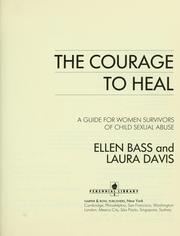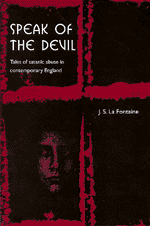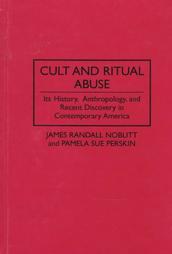The Satanic panic is a moral panic consisting of over 12,000 unsubstantiated cases of Satanic ritual abuse starting in the United States in the 1980s, spreading throughout many parts of the world by the late 1990s, and persisting today. The panic originated in 1980 with the publication of Michelle Remembers, a book co-written by Canadian psychiatrist Lawrence Pazder and his patient, Michelle Smith, which used the discredited practice of recovered-memory therapy to make sweeping lurid claims about satanic ritual abuse involving Smith. The allegations, which afterwards arose throughout much of the United States, involved reports of physical and sexual abuse of people in the context of occult or Satanic rituals. In its most extreme form, allegations involve a conspiracy of a global Satanic cult that includes the wealthy and elite in which children are abducted or bred for human sacrifices, pornography, and prostitution.

A moral panic is a widespread feeling of fear, often an irrational one, that some evil person or thing threatens the values, interests, or well-being of a community or society. It is "the process of arousing social concern over an issue", usually perpetuated by moral entrepreneurs and mass media coverage, and exacerbated by politicians and lawmakers. Moral panic can give rise to new laws aimed at controlling the community.

Lawrence Pazder was a Canadian psychiatrist and author. Pazder wrote the discredited biography, Michelle Remembers, published in 1980, with his patient Michelle Smith, which claimed to detail satanic ritual abuse.

The Satanic Bible is a collection of essays, observations, and rituals published by Anton LaVey in 1969. It is the central religious text of LaVeyan Satanism, and is considered the foundation of its philosophy and dogma. It has been described as the most important document to influence contemporary Satanism. Though The Satanic Bible is not considered to be sacred scripture in the way that the Christian Bible is to Christianity, LaVeyan Satanists regard it as an authoritative text as it is a contemporary text that has attained for them scriptural status. It extols the virtues of exploring one's own nature and instincts. Believers have been described as "atheistic Satanists" because they believe that God and Satan are not external entities, but rather projections of an individual's own personality—benevolent and stabilizing forces in their life. There have been thirty printings of The Satanic Bible, selling over a million copies.
Laurel Rose Willson was a con artist and American author. She authored books alleging Satanic ritual abuse (SRA), and later assumed the guise of a Holocaust survivor. The general theme of her writing, from adolescence, was horror fiction, often violent and sexual, in which she was the victim.

Michelle Remembers is a discredited 1980 book co-written by Canadian psychiatrist Lawrence Pazder and his psychiatric patient Michelle Smith. A best-seller, Michelle Remembers relied on the discredited practice of recovered-memory therapy to make sweeping, lurid claims about Satanic ritual abuse involving Smith, which contributed to the rise of the Satanic panic in the 1980s. While the book presents its claims as fact, and was extensively marketed on that basis at the time, no evidence was provided; all investigations into the book failed to corroborate any of its claims, with investigators describing its content as being primarily based on elements of popular culture and fiction that were popular at the time when it was written.

The Courage to Heal: A Guide for Women Survivors of Child Sexual Abuse is a self-help book by poet Ellen Bass and Laura Davis that focuses on recovery from child sexual abuse and has been called "controversial and polarizing".
Day-care sex-abuse hysteria was a moral panic that occurred primarily during the 1980s and early 1990s, and featured charges against day-care providers accused of committing several forms of child abuse, including Satanic ritual abuse. The collective cases are often considered a part of the Satanic panic. A 1982 case in Kern County, California, United States, first publicized the issue of day-care sexual abuse, and the issue figured prominently in news coverage for almost a decade. The Kern County case was followed by cases elsewhere in the United States, as well as Canada, New Zealand, Brazil, and various European countries.
Richard Noll is an American clinical psychologist and historian of medicine. He has published on the history of psychiatry, including two critical volumes on the life and work of Carl Gustav Jung, books and articles on the history of dementia praecox and schizophrenia, and on anthropology on shamanism. His books and articles have been translated into fifteen foreign languages and he has delivered invited presentations in nineteen countries on six continents.
David Finkelhor is an American sociologist known for his research into child sexual abuse and related topics. He is the director of the Crimes against Children Research Center, co-director of the Family Research Laboratory and professor of sociology at the University of New Hampshire.
The Satanic panic in Utah is part of a broader moral panic that began in the 1980s as children in the United States, subjected to coercive interviewing techniques at the hands of zealous social workers, made unsubstantiated allegations of bizarre Satanic rituals and horrific sexual and physical abuse at the hands of day care workers. As the decade unfolded, clients of believing therapists began to make similar allegations, which are now generally seen as confabulations caused by iatrogenic therapeutic techniques such as hypnosis and automatic writing rather than the discovery of repressed memories. Despite the similarities between the allegations of adults and children, investigations produced only circumstantial, and in many cases contradictory evidence of the patients' disclosures. The court cases surrounding SRA allegations were among the most expensive and lengthy in history and produced no convictions or convictions based solely on the testimony of children that were frequently overturned or dismissed upon appeal.

Theodore L. Gunderson was a Federal Bureau of Investigation Special Agent In Charge and head of the Los Angeles FBI, an American author, and a conspiracy theorist. Some of his FBI case work included the Death of Marilyn Monroe and the Assassination of John F. Kennedy. He was the author of the best-selling book How to Locate Anyone Anywhere Without Leaving Home. In later life, he researched a number of topics, notably including satanic ritual abuse.
Anne Johnson Davis was an American author and public speaker who in 2008 published Hell Minus One, a memoir in which she claimed to have been a childhood victim of Satanic ritual abuse (SRA). In the book, Davis further claimed that her allegations of abuse were corroborated through a confession by her mother and stepfather made to Lt. Detective Matt Jacobson of the Utah Attorney General's office.

Treating Survivors of Satanist Abuse is a collection of essays edited by Valerie Sinason addressing the treatment of those who allege they are survivors of Satanic ritual abuse. The book discusses the definitions, alleged history, scepticism about the phenomenon and ethical issues related to treating individuals reporting satanic ritual abuse. The book has been criticized by Ralph Underwager for being unscientific, defending a dubious concept with a complete lack of skepticism, possessing the veneer of science without any substance and for promoting unethical treatment practices.

Speak of the Devil: Tales of Satanic Abuse in Contemporary England is a scholarly book by J. S. La Fontaine published in 1998 that discusses her investigation of allegations of satanic ritual abuse made in the United Kingdom. The book documents a detailed investigation of the accounts of children during a wave of allegations of satanic ritual abuse, as well as the processes within the social work profession that supported the allegations despite a lack of evidence.
Valerie Sinason is a British poet, writer, psychoanalyst and psychotherapist who is known for promoting the idea that people with a developmental disability can benefit from psychoanalysis and also that satanic ritual abuse is widely practiced in the UK. She ran the workshop dealing with intellectual disability at the Tavistock Clinic for twenty years and also worked for 16 years as a consultant research psychotherapist at St George's Hospital Medical School. She is a Trustee of the Institute for Psychotherapy and Disability.
The International Society for the Study of Trauma and Dissociation (ISSTD) is a nonprofit professional organization of health professionals and individuals who are interested in advancing the scientific and societal understandings of trauma-based disorders, including posttraumatic stress disorder, complex posttraumatic stress disorder, and the dissociative disorders.
Carl A. Raschke is an American philosopher and theologian. Raschke is a Past Chair and Professor of Religious Studies Department at the University of Denver, specializing in continental philosophy, the philosophy of religion and the theory of religion. He was given the university lecturer award for 2020-2021. He is also listed with the affiliated faculty of the Global Center for Advanced Studies.
Diana Louisa Napolis, also known by her online pseudonym Karen Curio Jones or more often simply Curio, is an American former social worker. Between the late 1990s and 2000, Napolis posted a series of pseudonymous accusations alleging that individuals skeptical of the satanic ritual abuse moral panic were involved in a conspiracy to cover up the sexual abuse and murder of children. The pseudonymous poster's real life identity was confirmed as Napolis in 2000.








